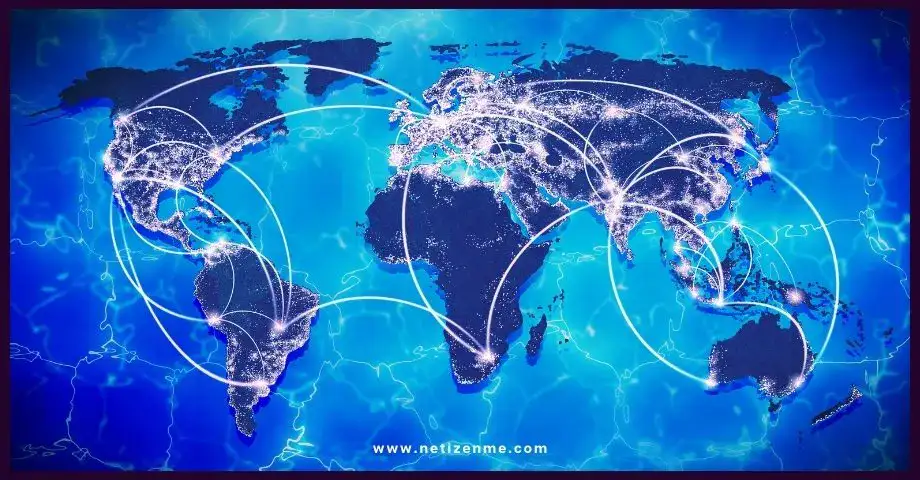In today’s interconnected world, terms like “Global North” and “Global South” are frequently used to describe the economic and geopolitical divisions between regions. These terms represent more than just geographical locations; they encompass complex socio-economic, political, and developmental disparities that shape our global landscape. In this blog post, we’ll delve into what exactly the Global North and Global South entail, exploring their definitions, historical contexts, and implications for global development.
Definition of the Global North and Global South
The Global North refers to the wealthier, more industrialized countries in the Northern Hemisphere. These countries are often characterized by higher levels of economic development, advanced infrastructure, technological innovation, and political influence on the global stage. Examples of countries in the Global North include the United States, Canada, Western European nations, Japan, and Australia.
Conversely, the Global South comprises less developed or developing countries, primarily in the Southern Hemisphere. These countries often face poverty, underdevelopment, limited resource access, and political instability. While there is no strict delineation between the Global North and Global South, countries in the Global South are generally found in regions like Sub-Saharan Africa, Latin America, South Asia, and parts of Southeast Asia.
Historical Context and Colonial Legacies
The division between the Global North and Global South has deep historical roots, stemming from centuries of colonialism, imperialism, and exploitation. During European colonization, many countries in the Global North established vast empires. Exploiting the resources and labor of countries in the Global South for their economic gain. This historical legacy impacts these regions’ socio-economic development, contributing to persistent inequalities and disparities.
Economic Disparities and Development Challenges
One of the most significant disparities between the Global North and Global South is economic development. Countries in the Global North generally have higher incomes and greater access to education and healthcare. And more advanced infrastructure than those in the Global South. Additionally, the Global South often grapples with issues such as poverty, food insecurity, inadequate healthcare systems, and environmental degradation.
Implications for Global Development
The division between the Global North and Global South has profound implications for global development efforts. International organizations, governments, and non-governmental organizations (NGOs) often prioritize addressing the development challenges faced by countries in the Global South through initiatives such as foreign aid, capacity-building programs, and technology transfer. However, efforts to bridge the gap between the Global North and Global South must go beyond mere assistance. And address the root causes of inequality, including structural barriers and historical injustices.
The Importance of Bridging Divides
Addressing the disparities between the Global North and Global South is a matter of social justice and essential for achieving sustainable global development and fostering a more equitable world. By promoting inclusive economic growth, investing in education and healthcare, and empowering marginalized communities, we can work towards creating a more balanced and prosperous global community.
10 Major Differences of the Global North and Global South
01. Economic Development:
The Global North comprises wealthier, more industrialized countries with higher GDP per capita, advanced infrastructure, and diversified economies. In contrast, the Global South comprises less developed or developing countries with lower GDP per capita, limited infrastructure, and reliance on primary industries.
02. Standard of Living:
Citizens of the Global North generally enjoy higher standards of living, including better access to education, healthcare, and sanitation facilities. In contrast, those in the Global South often experience higher poverty rates and limited access to essential services.
03. Technological Innovation:
The Global North leads in technological innovation, research, and development. And scientific advancements, with numerous patents and inventions from these countries. In contrast, the Global South faces challenges in accessing. And implementing advanced technologies due to resource constraints and limited investment in research and development.
04. Political Influence:
Countries in the Global North wield significant political influence on the global stage. Often holding critical positions in international organizations and shaping global policies. Conversely, countries in the Global South may have less political clout and struggle to be heard in international forums.
05. Wealth Disparity:
The Global North exhibits greater wealth disparity within its borders, with significant income gaps between the rich and poor. However, the overall wealth disparity between the Global North and Global South is much more pronounced, with vast differences in per capita income and wealth distribution.
06. Industrialization:
The Global North has undergone extensive industrialization processes, leading to the establishment of advanced manufacturing and service sectors. In contrast, many countries in the Global South are still in the early stages of industrialization, with economies based mainly on agriculture, mining, and low-skilled labor.
07. Education and Literacy Rates:
Education and literacy rates are generally higher in the Global North, where access to quality education is more widespread. In the Global South, however, education systems may be underfunded, and literacy rates may vary significantly, particularly in rural and remote areas.
08. Healthcare Infrastructure:
Healthcare infrastructure in the Global North is more developed, with better-equipped hospitals, clinics, and healthcare professionals. In contrast, healthcare systems in the Global South may struggle with limited resources, inadequate facilities, and challenges in providing universal access to healthcare services.
09. Urbanization:
Urbanization rates are higher in the Global North, where more people live in urban areas. Rapid urbanization in the Global South often leads to challenges such as overcrowding, informal settlements, and inadequate urban infrastructure.
10. Environmental Impact:
The Global North has historically contributed more to global environmental degradation, including carbon emissions, pollution, and resource depletion. However, due to its vulnerability and limited capacity to adapt, the Global South is disproportionately affected by environmental degradation’s consequences, such as climate change, deforestation, and natural disasters.
Understanding the Global North and Global South for a More Equitable Future
In conclusion, understanding the distinctions between the Global North and Global South is crucial for comprehending the complex dynamics of global development. While these terms represent significant wealth, power, and opportunity disparities, they also underscore the importance of collective action and solidarity in addressing global challenges. By bridging divides and promoting inclusive development, we can move closer to realizing a more equitable and sustainable future for all.
FAQs on Understanding the Global North and Global South
The Global North comprises wealthier, industrialized countries primarily located in the Northern Hemisphere. These countries are characterized by higher economic development, advanced infrastructure, technological innovation, and political influence on the global stage. Examples of countries in the Global North include the United States, Canada, Western European nations, Japan, and Australia.
Global South encompasses less developed or developing countries, primarily in the Southern Hemisphere. These countries often face poverty, underdevelopment, limited resource access, and political instability. While there is no strict delineation between the Global North and Global South, countries in the Global South are generally found in regions like Sub-Saharan Africa, Latin America, South Asia, and parts of Southeast Asia.
The North-South divide refers to the historical and ongoing wealth, development, and power disparities between the Global North and Global South. Stemming from centuries of colonialism, imperialism, and exploitation, the divide has left lasting impacts on these regions’ socio-economic development. Countries in the Global North have historically dominated global economic and political systems, while countries in the Global South have often struggled to overcome poverty, inequality, and underdevelopment.
The distinction between the Global North and Global South may be assessed regarding their economic, social, and political characteristics. Questions may focus on understanding the disparities in development indicators, historical contexts, and implications for global governance. Candidates may be required to analyze the impact of globalization, trade policies, and international relations on countries in the Global North and Global South and strategies for addressing global challenges such as poverty, climate change, and inequality.
This article is written by:
Our professional writers and editors are passionate about sharing high-quality information and insights with our audience. We conduct diligent research, maintain fact-checking protocols, and prioritize accuracy and integrity to the best of our capacity.
You can cite our articles under the author name "Netizenme"


